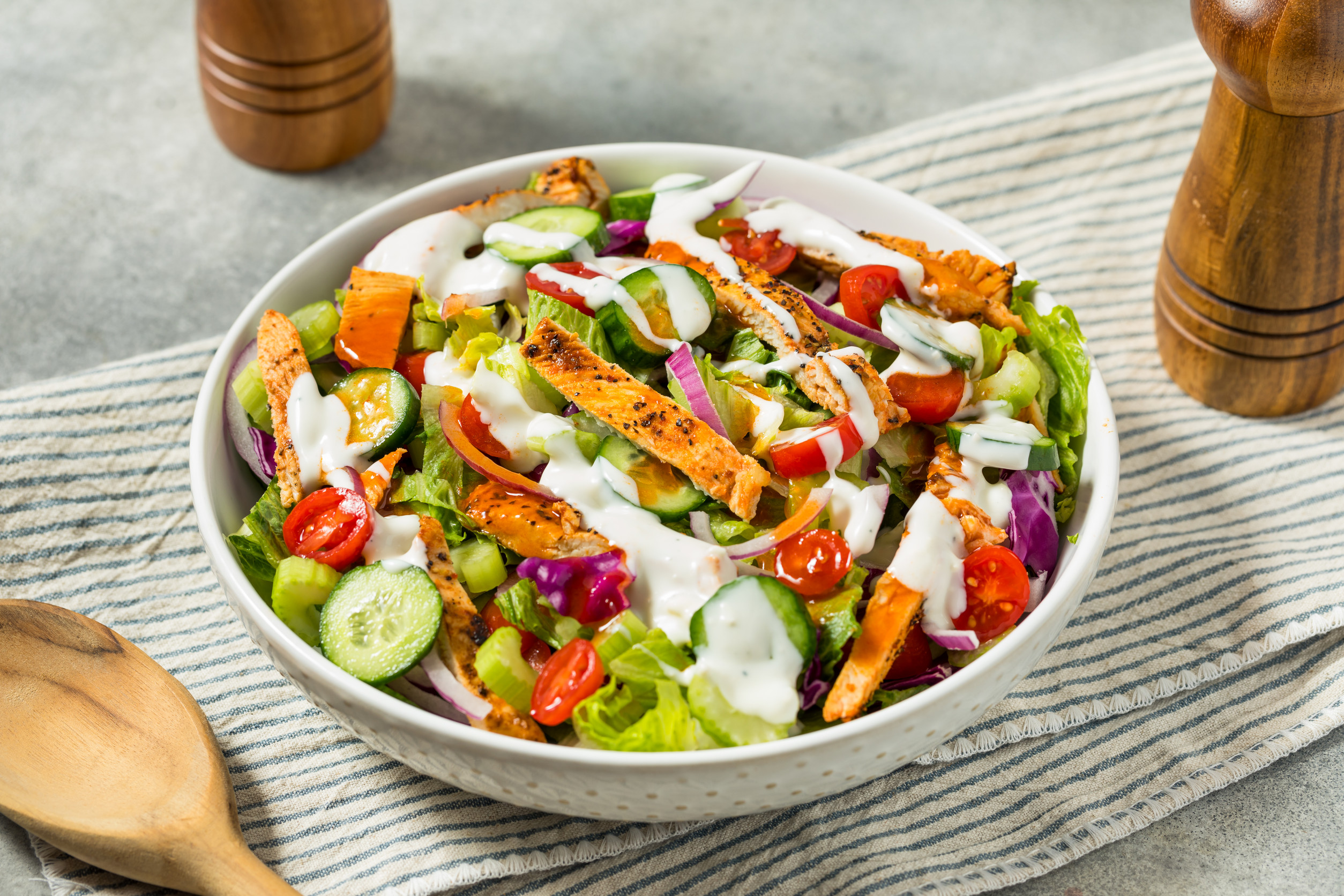You skipped the burger. You ordered the salad. You walked away thinking you made the healthier choice—but what if you didn’t? It turns out that many fast food salads are packed with more calories, fat, and sugar than the very burgers you were trying to avoid. The truth is, not all greens are created equal—especially when they’re served with a side of marketing spin and creamy dressing.
1. Some Fast Food Salads Have More Calories Than a Double Cheeseburger
It’s easy to assume that salad = healthy, but some fast food salads pack over 800 calories before you even open the dressing packet. Add croutons, cheese, fried chicken strips, or creamy toppings, and you’re suddenly eating more than a Big Mac. For example, Wendy’s Southwest Avocado Chicken Salad clocks in at 740 calories, with nearly 50 grams of fat. Compare that to a classic cheeseburger, which may be closer to 300–400 calories. In trying to “eat light,” you might be consuming more than you bargained for.
2. Dressings Are the Silent Calorie Bombs

Image Source: 123rf.com
That little cup of dressing might look harmless, but it’s often the most calorie-dense part of the meal. Ranch, Caesar, and creamy Southwest sauces can add 200–300 calories—and that’s if you only use one packet. Most people use more than one, or pour generously, turning a basic salad into a fat-heavy dish. Even so-called “light” dressings can be loaded with added sugar and sodium. If you’re not checking the label, you’re essentially pouring dessert on your greens.
3. Fried Chicken Ruins the Whole Point
A salad topped with grilled chicken is a decent option—but fried chicken? That’s just fast food dressed in lettuce. Fried or breaded chicken adds saturated fats and extra calories, undoing the potential health benefits of the vegetables underneath. At that point, it’s closer to a chicken sandwich than a salad. Many fast food salads rely on fried toppings to boost flavor and texture, but it’s a nutritional trade-off. You might be better off just ordering the sandwich and skipping the “healthy” illusion.
4. Sodium Levels Are Shockingly High
You might expect high sodium from burgers and fries—but fast food salads are often just as salty. A single fast food salad can contain over 1,000 milligrams of sodium—nearly half of your recommended daily intake. Between the meat, cheese, dressing, and processed toppings, the sodium content skyrockets quickly. High sodium intake is linked to heart disease, bloating, and high blood pressure, which makes that “light” meal a lot heavier than it looks. If you’re watching your salt, salads might not be the safe bet you thought.
5. Sugar Can Sneak In Through Dressings and Toppings
Sugar isn’t just in sodas and desserts—it often hides in salad dressings, candied nuts, dried cranberries, and even marinades. A typical fast food salad can have 10–20 grams of sugar, mostly from ingredients that don’t taste overly sweet. That adds up fast, especially if you’re pairing the salad with a sweetened iced tea or a smoothie. When sugar sneaks into “healthy” meals, it becomes harder to track and control. A burger with minimal condiments may actually have less sugar overall.
6. Portion Size Is Often Overwhelming
Fast food portions are famously large, and salads are no exception. What’s marketed as a “healthy bowl” is often enough to feed two people. These oversized servings make it easy to overeat, especially when the toppings taste more like comfort food than clean fuel. Without realizing it, you’re consuming more than your body needs in one sitting. Just because it’s salad doesn’t mean it’s low-calorie or appropriate in size.
7. Marketing Labels Can Be Misleading

Image Source: 123rf.com
Terms like “fresh,” “fit,” “smart choice,” or “low-fat” create a false sense of health. These labels are often unregulated and used for branding more than actual nutritional guidance. Just because something looks or sounds healthy doesn’t mean it’s good for you. Many fast food salads rely on buzzwords rather than balanced ingredients. If you’re trying to eat clean, you’ll need to look beyond the name and check the actual nutrition facts.
8. Burgers Can Actually Be a Simpler, Cleaner Choice
Believe it or not, a basic burger with meat, bread, and a few vegetables may be more balanced than a salad loaded with processed toppings. You know what you’re getting: protein, carbs, and fat—with fewer mystery ingredients. Choose a single-patty burger without bacon or mayo, and it might even be a lower-calorie, lower-sodium option. The key is simplicity. Sometimes less marketing and fewer ingredients mean fewer nutritional surprises.
Rethink What “Healthy” Really Looks Like
The next time you choose between a burger and a salad, don’t let assumptions lead the way. Fast food salads aren’t always the nutritional slam dunk they claim to be. With heavy dressings, processed toppings, and hidden sugars, they can be just as indulgent—and misleading—as anything else on the menu. The real power is in knowing what you’re eating and choosing wisely, not blindly reaching for the “healthy” label.
Have you ever been shocked by how unhealthy a fast food salad turned out to be? What’s your go-to option when trying to eat light on the go? Share your experience in the comments below!
Read More
Fast Food Items Nutritionists Secretly Approve Of
What Your Favorite Fast-Food Chain Doesn’t Want You to Know About Their Ingredients


